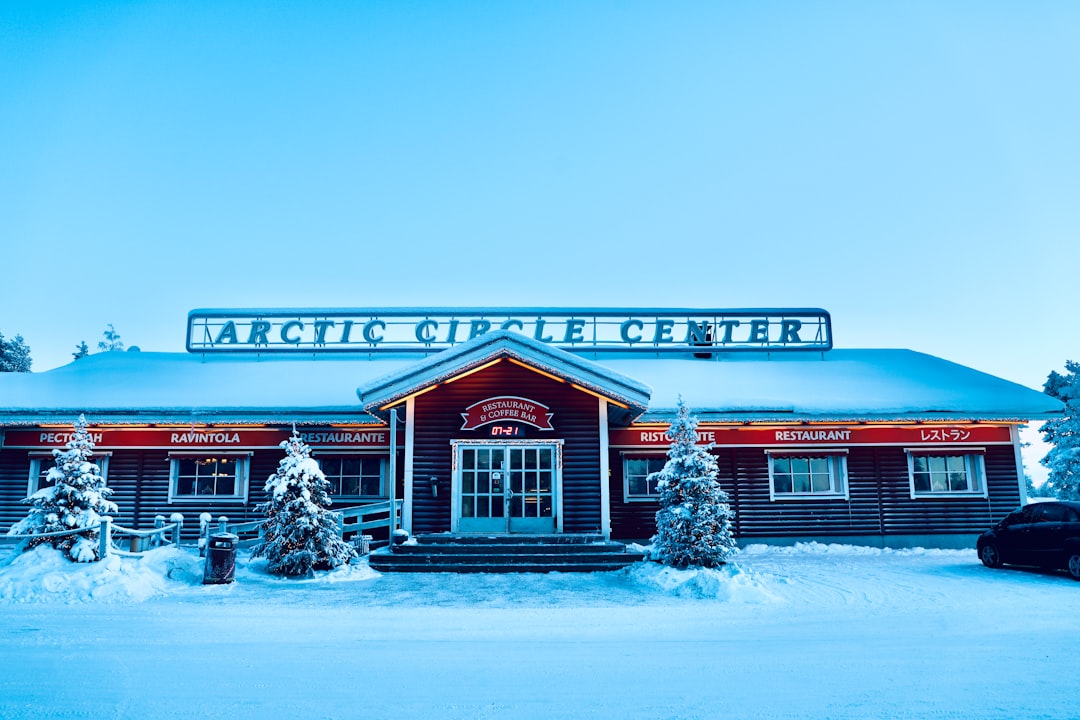
Supercharge your lead generation with a FREE Google Ads audit - no strings attached! See how you can generate more and higher quality leads
Get My Free Google Ads AuditFree consultation

No commitment
Supercharge your lead generation with a FREE LinkedIn Ads audit - no strings attached! See how you can generate more and higher quality leads
Get My Free Google Ads AuditFree consultation

No commitment
Supercharge your lead generation with a FREE Meta Ads audit - no strings attached! See how you can generate more and higher quality leads
Get My Free Google Ads AuditGet My Free LinkedIn Ads AuditGet My Free Meta Ads AuditFree consultation

No commitment
Supercharge your lead generation with a FREE Google Ads audit - no strings attached! See how you can generate more and higher quality leads
Get My Free Google Ads AuditFree consultation

No commitment
In today's complex marketing landscape, effective B2B marketing requires a strategic mix of both online and offline channels working in concert. Online channels like social media build digital brand awareness, email marketing nurtures ongoing relationships, and SEO drives organic visibility. Meanwhile, offline channels such as trade shows generate face-to-face connections, direct mail creates tangible touchpoints, and industry publications establish thought leadership. Within this integrated ecosystem, Google Ads plays a critical middle-funnel role by capturing high-intent prospects at the exact moment they're searching for solutions—effectively bridging the gap between broader awareness efforts and your sales process. For frozen food processors, Google Ads represents a powerful opportunity to seamlessly intercept decision-makers at their precise moment of need, whether they're following up after a trade show or responding to a direct mail piece; target with precision based on technical specifications and specialized terminology unique to your industry; measure ROI completely by tracking from click to quote to closed deal, connecting digital touchpoints with offline sales; complement other channels through remarketing to trade publication readers, event attendees, and digital audiences alike. Addressing challenges such as missing high-value prospects, Google Ads ensures that CRM efforts remain robust by continuously feeding engaged data back into systems, allowing decision makers to remain visible at all times.
Frozen food processors operate in a market defined by competitive supply chains, strict compliance standards, and rapidly shifting buyer preferences. Generating qualified leads requires more than just broad digital outreach: success hinges on granular targeting, precise message alignment, and the ability to adapt in real time as market conditions evolve. For a comprehensive overview of digital marketing strategies tailored to this industry, explore digital marketing for food processing.
A modern, data-driven approach to Google Ads integrates paid search with broader marketing goals, ensuring every dollar accelerates pipeline development. By connecting ad performance to sales outcomes and leveraging unified data, frozen food processors can pinpoint their most valuable audiences and maximize every opportunity across the buyer journey.
This guide is designed for B2B marketers, service providers, and regional operators in the frozen food processing space. It supports teams seeking to drive qualified leads efficiently, unify sales and marketing data, and achieve measurable ROI from every digital campaign. Ready to accelerate your lead generation? Get started for free with Sona.

Frozen food processors operate in a market where timing, specialization, and regional targeting determine contract wins. Google Ads offers a direct path to engage decision-makers precisely when they are researching new packaging, sourcing, or logistics solutions—bridging the gap that general display or trade media cannot fill.
For teams seeking measurable growth and transparent attribution, Google Ads serves as a vital engine that not only generates demand but documents its true impact across the full sales cycle. Ready to see how this all comes together? Get started for free with Sona.

Frozen food processors operate in a competitive landscape where digital visibility directly impacts sales cycles and distributor relationships. A well-structured Google Ads strategy enables teams to engage key buyers at every stage, drive consistent demand, and attribute ROI with precision.
Ready to optimize your digital campaigns? Get started for free with Sona.

Frozen food processors can unlock high-impact growth by diversifying their digital strategy beyond conventional channels. Tapping into specialized tactics, such as vertical keyword targeting and industry placements, reveals segments with less competition and more qualified intent. For an industry overview, see this digital marketing guide for food processing. Explore actionable B2B marketing strategies tailored to your sector.
Growth-minded frozen food processors who leverage these strategies maximize the ROI of Google Ads and other demand generation programs. Integrating unified data and intent-driven insights transforms every stage of campaign execution, ensuring each dollar spent reaches its highest-value target. To see these strategies in action, get started for free with Sona.

Precision in audience segmentation is essential for frozen food processors seeking to drive measurable outcomes from Google Ads. Rather than relying on broad targeting, revenue teams can distinguish between key buyer personas, such as foodservice distributors and grocery chains, ensuring messaging and offers align with real business needs. For an overview of digital marketing strategies tailored for the food processing industry, visit digital marketing for food processing.
Smart segmentation, combined with unified data and real-time feedback loops, empowers frozen food processors to deploy PPC strategies that drive higher engagement, more qualified leads, and greater marketing efficiency. If you're ready to optimize your segmentation and ad performance, get started for free with Sona.

| Industry | Keyword | Monthly Search Volume | Competition Level | Low Bid | High Bid |
| Frozen Food Processors | frozen food processors | 20 | LOW |
Frozen food processors operate in a dynamic, high-volume market where timely, targeted engagement with buyers can determine success. Digital marketing strategies for food processing offers a unique advantage: it captures high-intent prospects precisely when they seek solutions, ensuring marketing dollars reach decision-makers who are ready to act. For a deeper dive into optimizing paid search, explore the Sona blog for strategies that align with industry best practices.
While social media and email play essential roles in awareness and nurturing, Google Ads delivers qualified, in-market leads at the critical middle-funnel stage. By focusing on actionable sales opportunities, frozen food processors can intercept potential partners and clients at the exact moment of need, transforming anonymous website visitors into new business.
Using a carefully curated keyword list—covering branded terms, high-intent product queries, and solution-focused phrases—frozen food processors can build campaigns that not only generate leads but also fuel long-term growth and market share. Looking to accelerate your digital marketing results? Get started for free with Sona.
Precision in keyword selection is fundamental for effective Google Ads for Frozen Food Processors. Start by clustering keywords around specific service types such as private label manufacturing, bulk supply, or custom blends to capture search intent aligned with your unique offering. For additional context on digital marketing in this space, review this overview of digital marketing strategies for food processing. Localize your campaigns with city, neighborhood, and "near me" modifiers, which drive qualified leads in key distribution regions. Incorporate long-tail and question-based queries to attract buyers further along the decision cycle, and filter out irrelevant impressions using carefully constructed negative keyword lists.
Aligning keyword choices with your content marketing ensures that prospects encounter consistent messaging throughout their journey, increasing brand trust and recognition. Using advanced data platforms, marketers can surface the precise terms real decision-makers use, while also identifying companies and visitor profiles behind those searches. This enables ongoing optimization, making it possible to prioritize high-intent keywords and shift focus as market demand evolves.
Ad copy should speak directly to the pain points and motivations of procurement professionals and foodservice buyers. Craft headlines that address challenges like supply chain reliability or food safety standards, and reinforce trust by showcasing certifications, industry partnerships, and eco-labels. For practical tips on expanding a frozen food business, see this guide on growing a frozen food business. Activate urgency with incentives such as bulk order discounts or guaranteed on-time delivery, and deploy ad extensions like calls, structured snippets, and service highlights to give prospects multiple engagement touchpoints.
Maintaining a seamless narrative between your paid ads, social posts, and email outreach prevents fragmented experiences that can erode trust. Platforms that unify messaging across channels help ensure that every interaction—whether from a Google ad or a follow-up email—reinforces the same value proposition and call to action. When audience lists and campaign messaging are dynamically updated based on real-time engagement, food processors can personalize outreach at scale and respond instantly to shifting buyer needs.
Effective landing pages align tightly with the ad’s promise, segmenting content by product line or vertical (e.g., ready-to-eat entrees versus bulk ingredients) for a frictionless user journey. Integrate ROI calculators, trust badges, and frequently asked questions to address buyer concerns and accelerate decision-making. For inspiration, explore examples of food and beverage advertising that highlight successful creative approaches. Clear, persistent calls to action—especially those optimized for mobile—ensure every visitor can convert easily, whether requesting a quote or downloading a product spec sheet.
Connecting form fills and lead capture directly to your CRM and marketing automation platforms eliminates data silos and manual entry errors. When a visitor submits their details, enriched company and intent data flow seamlessly into the pipeline, allowing sales and marketing teams to act on qualified opportunities without delay. This creates a feedback loop where engagement data from Google Ads campaigns directly informs follow-up strategy and sales prioritization.
Maximize ROI by tracking both micro-conversions (like downloads or video views) and macro-conversions (such as demo requests or sales-qualified leads). Smart bidding strategies such as Target CPA and Max Conversions enable marketers to automate budget allocation toward the highest-value actions—learn more from the official Google Ads help page. Routine A/B testing—on headlines, CTA placements, and page layouts—ensures campaigns evolve in response to real-world performance.
Integrating offline conversions, such as deals closed after an initial digital touchpoint, gives a full picture of ad effectiveness and real revenue impact. Platforms that unify Google Ads data with CRM records empower teams to build accurate attribution models, refine bidding, and optimize creative based on true pipeline contribution. This approach ensures continuous improvement and enables marketing leaders to adapt content and messaging in lockstep with changing buyer behaviors and market demands.
For additional insight into post-click optimization, see [retargeting strategies](../retargeting-strategies-b2b). To experience the benefits of seamless campaign execution firsthand, get started for free with Sona.

Frozen food processors can achieve accelerated growth in digital channels by building a connected marketing ecosystem that amplifies each touchpoint. Leveraging multi-channel tactics and data-driven insights unlocks new opportunities to engage both prospects and current customers, while reinforcing the brand across every stage of the buying journey.
Smart execution in Google Ads for frozen food processors requires a unified approach: precise keyword targeting, segmented audiences, compelling ad creative, and actionable analytics. Addressing common challenges like incomplete data, disconnected campaigns, and anonymous site visitors is crucial. When marketers leverage a platform that unifies visitor identification, real-time audience updates, and CRM sync, they gain the visibility and control needed to maximize qualified leads and ROI across all digital initiatives. For teams ready to streamline their digital marketing, get started for free with Sona and see how a connected platform can accelerate your growth.
In conclusion, utilizing Google Ads effectively can significantly enhance your frozen food processing business, unlocking new opportunities for growth and customer engagement. By understanding the unique aspects of the frozen food industry and strategically implementing targeted advertising, you can reach the right audience and maximize your return on investment.
Throughout this article, we've explored the challenges frozen food processors face in the digital advertising landscape. We've highlighted the importance of specific targeting options, creative ad strategies, and industry best practices that can elevate your marketing efforts. Armed with this knowledge, you're now better equipped to navigate the complexities of Google Ads and optimize your campaigns for success.
The potential for transformation in your business is immense. By adopting these strategies, you can not only boost your brand visibility but also increase sales and customer loyalty. Embrace this opportunity to refine your approach and see the tangible impact on your business growth.
To truly harness the power of data-driven insights and streamline your advertising efforts, start for free and experience the platform's capabilities today.
To set up Google Ads for your frozen food processing business, start by building targeted keyword lists that capture search intent aligned with your offerings. Develop compelling ad copy that addresses buyer pain points and motivations, and design landing pages that align with your ads. Implement data-driven optimizations using smart bidding strategies and integrate offline conversions to measure real revenue impact.
The best keywords to target are those clustered around specific service types like private label manufacturing and bulk supply. Use long-tail and question-based queries to attract buyers further along the decision cycle, and apply local modifiers for key distribution regions.
Measure success by tracking micro-conversions like downloads and macro-conversions such as sales-qualified leads. Use Google Ads’ conversion tracking, integrate offline conversions, and sync with your CRM to build accurate attribution models and refine bidding strategies.
Successful campaigns often include search campaigns targeting high-intent decision-makers, display ads for brand recall, and video ads that demonstrate unique processes. Remarketing campaigns also reconnect with past visitors to increase conversion likelihood.
Integrate Google Ads with your CRM by syncing audience and lead data across platforms, enabling unified attribution and personalized retargeting. This integration ensures enriched data flows bidirectionally, updating both targeting and reporting in real time.
Join results-focused teams combining Sona Platform automation with advanced Google Ads strategies to scale lead generation

Connect your existing CRM

Free Account Enrichment

No setup fees
No commitment required

Free consultation

Get a custom Google Ads roadmap for your business
Join results-focused teams combining Sona Platform automation with advanced Meta Ads strategies to scale lead generation

Connect your existing CRM

Free Account Enrichment

No setup fees
No commitment required

Free consultation

Get a custom Google Ads roadmap for your business
Join results-focused teams combining Sona Platform automation with advanced LinkedIn Ads strategies to scale lead generation

Connect your existing CRM

Free Account Enrichment

No setup fees
No commitment required

Free consultation

Get a custom Google Ads roadmap for your business
Join results-focused teams using Sona Platform automation to activate unified sales and marketing data, maximize ROI on marketing investments, and drive measurable growth

Connect your existing CRM

Free Account Enrichment

No setup fees
No commitment required

Free consultation

Get a custom Google Ads roadmap for your business
Over 500+ auto detailing businesses trust our platform to grow their revenue
Join results-focused teams using Sona Platform automation to activate unified sales and marketing data, maximize ROI on marketing investments, and drive measurable growth

Connect your existing CRM

Free Account Enrichment

No setup fees
No commitment required

Free consultation

Get a custom Google Ads roadmap for your business
Over 500+ auto detailing businesses trust our platform to grow their revenue
Join results-focused teams using Sona Platform automation to activate unified sales and marketing data, maximize ROI on marketing investments, and drive measurable growth

Connect your existing CRM

Free Account Enrichment

No setup fees
No commitment required

Free consultation

Get a custom Google Ads roadmap for your business
Over 500+ auto detailing businesses trust our platform to grow their revenue
Our team of experts can implement your Google Ads campaigns, then show you how Sona helps you manage exceptional campaign performance and sales.
Schedule your FREE 15-minute strategy sessionOur team of experts can implement your Meta Ads campaigns, then show you how Sona helps you manage exceptional campaign performance and sales.
Schedule your FREE 15-minute strategy sessionOur team of experts can implement your LinkedIn Ads campaigns, then show you how Sona helps you manage exceptional campaign performance and sales.
Schedule your FREE 15-minute strategy sessionOur team of experts can help improve your demand generation strategy, and can show you how advanced attribution and data activation can help you realize more opportunities and improve sales performance.
Schedule your FREE 30-minute strategy sessionOur team of experts can help improve your demand generation strategy, and can show you how advanced attribution and data activation can help you realize more opportunities and improve sales performance.
Schedule your FREE 30-minute strategy sessionOur team of experts can help improve your demand generation strategy, and can show you how advanced attribution and data activation can help you realize more opportunities and improve sales performance.
Schedule your FREE 30-minute strategy sessionOur team of experts can help improve your demand generation strategy, and can show you how advanced attribution and data activation can help you realize more opportunities and improve sales performance.
Schedule your FREE 30-minute strategy session





Launch campaigns that generate qualified leads in 30 days or less.
